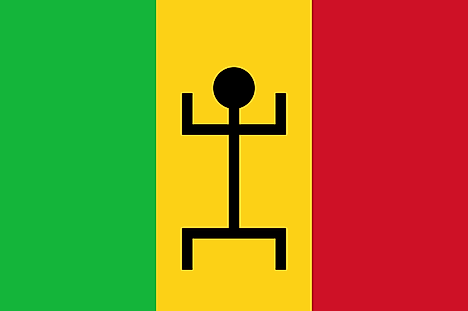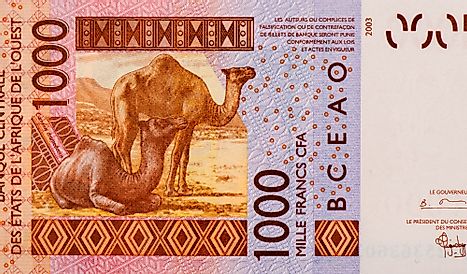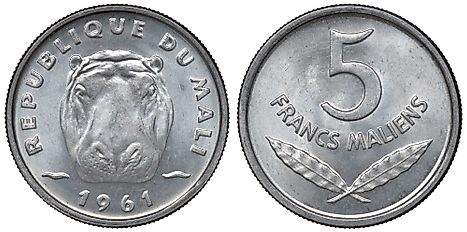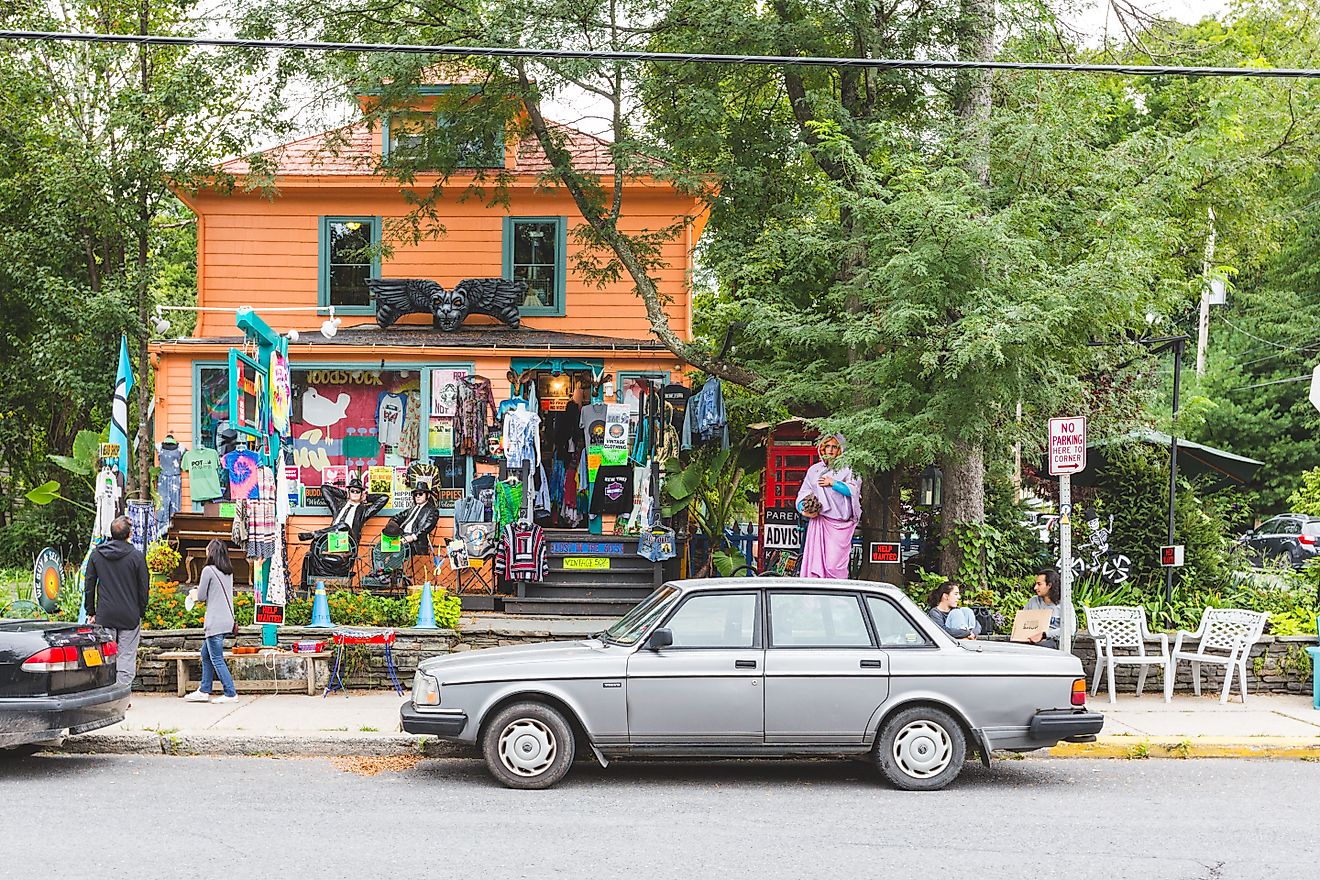Flags, Symbols, & Currencies of Mali
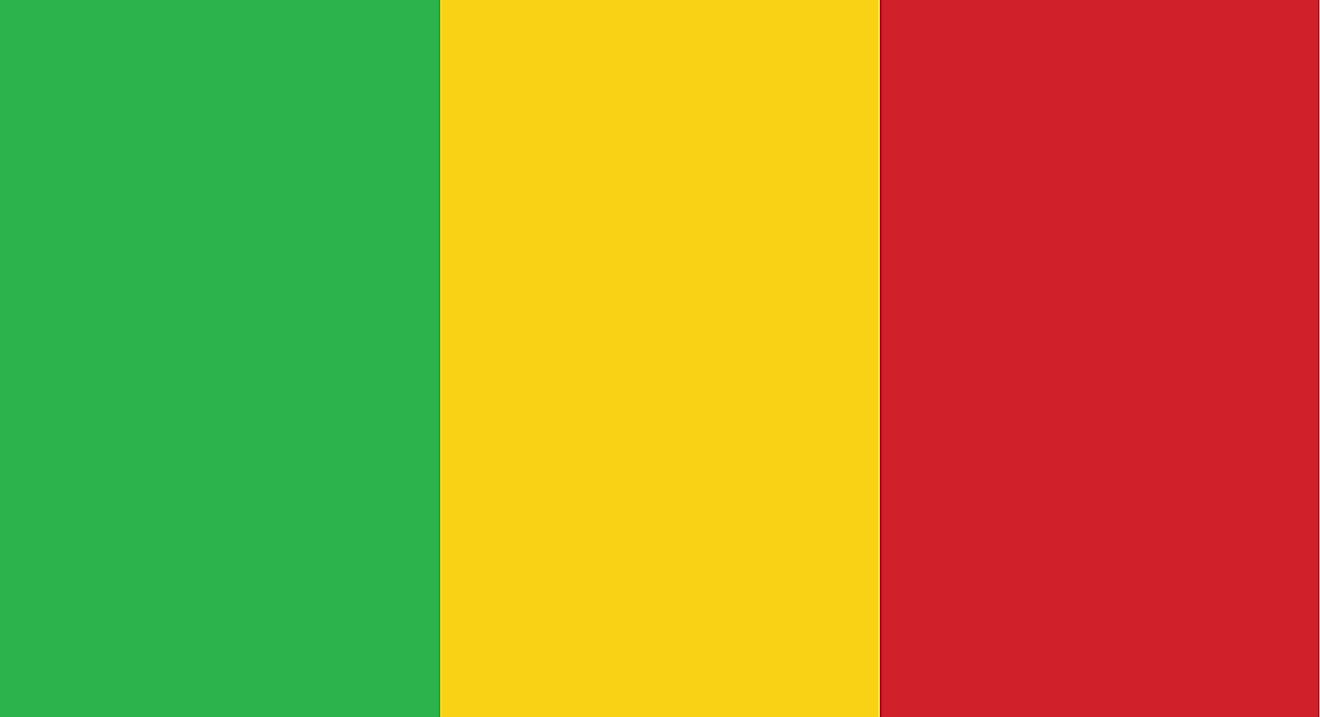
The Mali flag was officially adopted on March 1, 1961. The national flag of Mali has a simple design and is modeled after the French Tricolore. It is a tricolor featuring equal vertical bands of green(left/hoist side), gold (middle), and red (right). These colors are the Pan-African colors. Mali’s flag is nearly identical to Guinea’s flag, however the colors are arranged in the reverse order. The national flag of Mali has a height to length proportion of 2:3.
The green color in the flag of Mali symbolizes the fertility of land. The gold color represents the country's mineral wealth, as well as purity. The red color is a reminder of the blood that was shed to gain independence from the French rule, gold represents the country's mineral wealth and purity, while green stands for its forests and fertility of the land. .
History of Mali's Flag
The current national flag of Mali was adopted on March 1, 1961. However, Mali's first flag was adopted in 1959, when Mali joined the Mali Federation. The original flag was similar to the current flag but featured a human stick figure on the middle stripe. The figure was black in color and had its arms raised towards the sky. Following opposition by Muslim fundamentalists, the figure was removed from the flag.
Symbols of Mali
National Coat of Arms of Mali
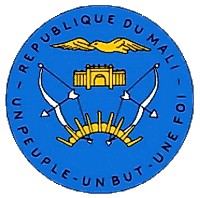
The first seal for Mali was designed soon after the dissolution of the Mali Federation in 1960. It almost resembled current arms save for the color scheme. The current seal was adopted on October 20, 1973. It consists of a light blue circle with a vulture flying above the mosque of Djenne. Below the mosque is a rising sun and on each side of the sun are bows bent by their arrow. The vulture, mosque, and rising sun are allin gold colors while the arrows and bows are in white. The name of the country: REPUBLIQUE DU MALI (REPUBLIC OF MALI) is displayed at the top, and the national motto: Un Peuple, Un But, Une Foi ("One People, One Goal, One Faith") at the bottom.
National Anthem
- Anthem Title: Le Mali ("The Mali")
- Music composer: Banzumana Sissoko
- Lyricist: Seydou Badian Kouyaté
- Date of Adoption: 1962
Le Mali (The Mali), commonly known as "Pour l'Afrique et pour toi, Mali" ("For Africa and for you, Mali"), is the national anthem of Mali, adopted on August 9, 1962. Seydou Badian Kouyaté wrote the anthem's lyrics and Banzumana Sissoko set the lyrics to music. Like most African national anthems, Le Mali is themed around African unity and patriotism. It highlights Malian's willingness to sacrifice their lives for their nation and liberty.
Le Mali
A ton appel Mali
Pour ta prospérité
Fidèle à ton destin
Nous serons tous unis
Un peuple un but une foi
Pour une Afrique Unie
Si l'ennemi découvre son front
Au dedans ou au dehors
Debout sur les remparts
Nous sommes résolus de mourir
Chorus
Pour l'Afrique et pour toi, Mali,
Notre drapeau sera liberté.
Pour l'Afrique et pour toi, Mali,
Notre combat sera unité.
O Mali d'aujourd'hui
O Mali de demain
Les champs fleurissent d'espérance
Les cœurs vibrent de confiance
Debout villes et campagnes
Debout femmes, jeunes et vieux
Pour la patrie en marche
Vers l'avenir radieux
Pour notre dignité
Renforçons bien nos rangs
Pour le salut public
Forgeons le bien commun
Ensemble au coude à coude
Faisons le sentier du bonheur
Chorus
La voie est dure très dure
Qui mène au bonheur commun
Courage et dévouement
Vigilance à tout moment
Vérité des temps anciens
Vérité de tous les jours
Le bonheur par le labeur
Fera le Mali de demain
Chorus
L'Afrique se lève enfin
Saluons ce jour nouveau
Saluons la liberté
Marchons vers l'unité
Dignité retrouvée
Soutient notre combat
Fidèle à notre serment
De faire l'Afrique unie
Ensemble debout mes frères
Tous au rendez-vous de l'honneur
Chorus
The Mali
At your call, Mali
For your prosperity
Loyal towards your destiny
We will be all united,
One people, one goal, one faith,
For a united Africa
If the enemy should show himself
Inside or outside,
Standing on the ramparts,
We are ready to die.
Chorus
For Africa and for you, Mali,
Our banner shall be liberty.
For Africa and for you, Mali,
Our fight shall be for unity.
Oh, Mali of today,
Oh, Mali of tomorrow,
The fields are flowering with hope
Hearts are thrilling with confidence.
Standing town and country
Standing women, young and old
For the country moving
Towards a bright future
For our dignity
Let us strengthen our ranks well
For the public salvation
Let us forge the common good
Together shoulder to shoulder
Let us make the path of happiness
Chorus
The path is hard very hard
Which leads to common happiness
Courage and dedication
Vigilance at all times
Truth of ancient times
Truth everyday
Happiness through labour
Will make the Mali of tomorrow
Chorus
Africa finally rises
Let us welcome this new day
Let us welcome liberty
Let us march towards unity
New found dignity
Support our fight
True to our oath
Of making Africa united
My brothers standing together
All at the appointment of honour
Chorus
The Currency of Mali is the West African CFA franc
The currency of Mali is the West African CFA franc, which is denoted by the symbol CFAF, and has an ISO code of XOF. The West African CFA franc broken into 100 subdivisions known as centimes. Mali previously had an independent currency known as Malian franc, that was in use between 1962 and 1984, before readopting the CFA franc as the official currency. Although the CFA franc is subdivided into 100 centimes, the subdivisions are not in circulation in the country.
CFA franc is a name given to the two currencies issued in West and Central Africa. The two currencies assume permanent parity and are effectively interchangeable. The CFA franc coins and notes are issued in Mali by the Central Bank of West Africa. The currency is issued in 14 West and Central African states. The CFA franc was developed in 1945 as a result of the weakness of the French franc after the World War II. It was created in French colonies to cushion the colonies from the strong devaluation of the French franc and thereby enhance export to France.
Banknotes and Coins
In 1961, aluminum coins dated 1961 were issued in different denominations including 5, 10, and 25 francs. The second series of coins made of aluminum and bronze were issued between 1975 and 1977 in additional denominations of 50 and 100 francs. In 1962, banknotes in the denomination of 50, 100, 500, 1000, and 5000 francs were issued by the Bank of the Republic of Mali. A second series of banknotes were issued in 1967 in the same denominations as the notes issued in 1962. In 1971, the Central Bank of Mali began issuing notes, producing the third series of banknotes in denominations ranging from 100 to 10,000 francs.
Historical Currencies of Mali
The West African CFA franc was used as Mali's currency until 1962 when it was replaced by the Malian franc. The Malian franc was at par with the CFA franc and subdivided into 100 centimes, though the subdivisions were not issued. However, in 1967 the Malian franc significantly declined in value relative to CFA franc, with Mali suffering a trade deficit lasting until the 1970s. Mali readopted the CFA franc at an exchange rate of 2 Malian francs for 1 CFA franc in 1984.

